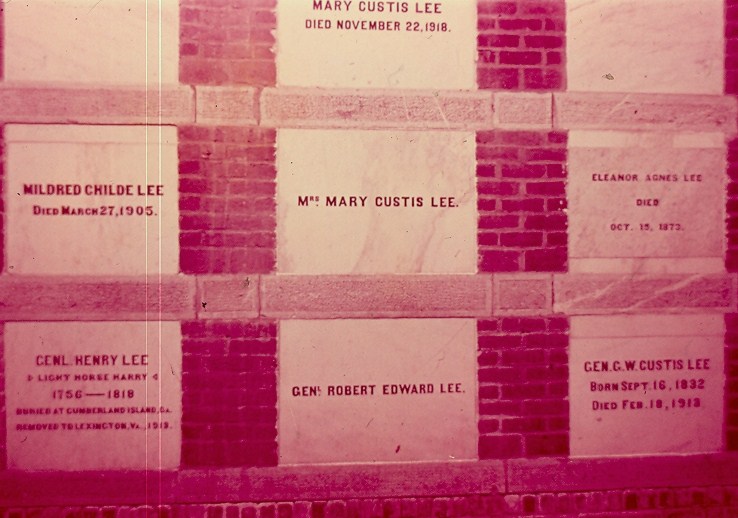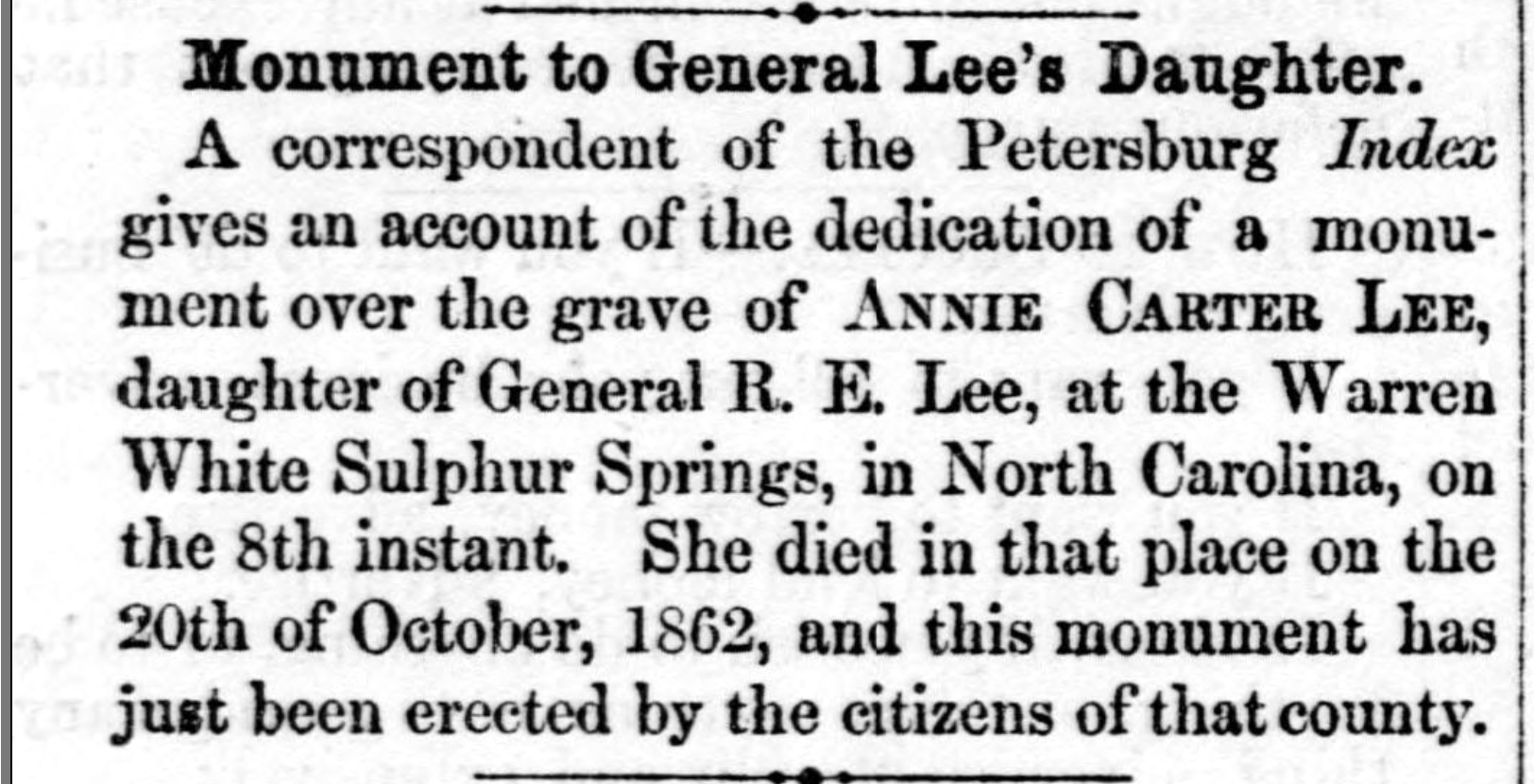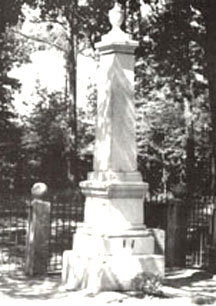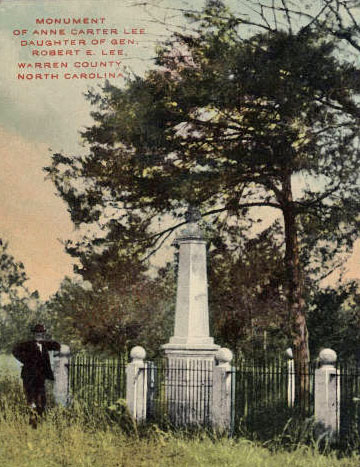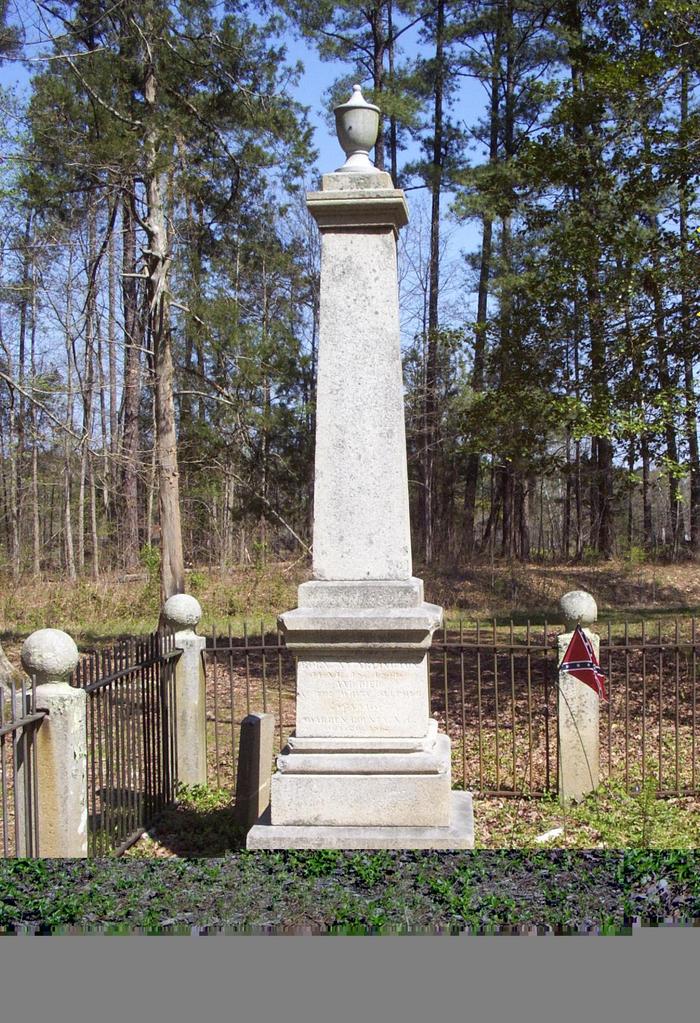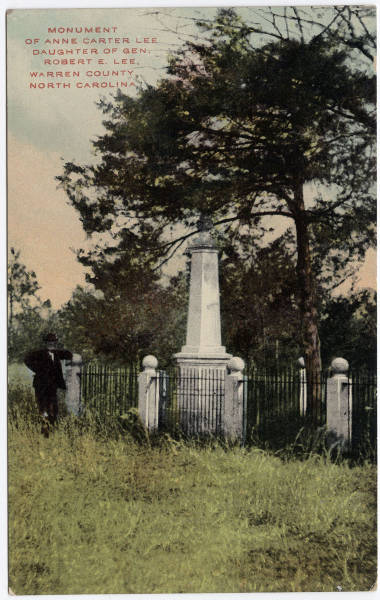Annie was originally buried near Warrenton, North Carolina but, in 1994, her remains were moved to lie with her family members in the Lee Chapel and Museum in Lexington, Virginia.∼Annie Carter Lee, the second daughter of Robert Edward Lee and Mary Anne Randolph Custis Lee, was born in 1839 at Arlington, the 10,000-acre plantation built by her grandfather on the Potomac River overlooking Washington, D.C. Both of her parents were native Virginians. Her mother was the only surviving child of George Washington Parke Custis, the grandson of George Washington's wife Martha. Her paternal grandmother, Ann Carter Lee, for whom she was named, was the wife of "Light Horse Harry" Lee, a Revolutionary War hero and close associate of George Washington.
Upon graduating second in his class at West Point, Robert E. Lee began his career with the Army Corps of Engineers where he was often given assignments that created extended separations from his wife and seven children. Lee strived to be a dedicated and doting father despite his absences from home. He had a special bond with Annie, whom he nicknamed "Little Raspberry" due to a reddish birthmark on her face. She was a gifted and competent young woman. However, she was shy, due to a childhood injury that disfigured an eye. She and her sister Agnes, who were known as "The Girls" by the family, were so close they were often thought of as twins.
Annie Carter Lee was twenty-three at the start of the war that left her family homeless and her father a hero. In June 1862, after the Union Army occupied their home at Arlington, Annie and Agnes were sent to a popular resort outside of Warrenton named Jones Springs (also known as White Sulphur Springs) for safety. Several months after her arrival, Annie died of typhoid fever while her father was serving as commanding general of the Army of Northern Virginia. Unable to take their beloved Annie's body home across enemy lines, her mother gratefully accepted the resort owner's generous offer to lay her to rest in the nearby Jones family cemetery. General Lee visited her grave with Agnes shortly before his death during his final Southern tour in 1870.
In 1994, Lee family members requested that bring Annie Carter Lee's remains be brought back to Virginia to be reunited with her parents and siblings in the family crypt at Lee Chapel in Lexington, Virginia, where her father had served as president of Washington and Lee University after the war. The granite obelisk created in her honor by a Confederate veteran in 1866 remains behind.
Photo's by
P. Bible
deegraver
Annie was originally buried near Warrenton, North Carolina but, in 1994, her remains were moved to lie with her family members in the Lee Chapel and Museum in Lexington, Virginia.∼Annie Carter Lee, the second daughter of Robert Edward Lee and Mary Anne Randolph Custis Lee, was born in 1839 at Arlington, the 10,000-acre plantation built by her grandfather on the Potomac River overlooking Washington, D.C. Both of her parents were native Virginians. Her mother was the only surviving child of George Washington Parke Custis, the grandson of George Washington's wife Martha. Her paternal grandmother, Ann Carter Lee, for whom she was named, was the wife of "Light Horse Harry" Lee, a Revolutionary War hero and close associate of George Washington.
Upon graduating second in his class at West Point, Robert E. Lee began his career with the Army Corps of Engineers where he was often given assignments that created extended separations from his wife and seven children. Lee strived to be a dedicated and doting father despite his absences from home. He had a special bond with Annie, whom he nicknamed "Little Raspberry" due to a reddish birthmark on her face. She was a gifted and competent young woman. However, she was shy, due to a childhood injury that disfigured an eye. She and her sister Agnes, who were known as "The Girls" by the family, were so close they were often thought of as twins.
Annie Carter Lee was twenty-three at the start of the war that left her family homeless and her father a hero. In June 1862, after the Union Army occupied their home at Arlington, Annie and Agnes were sent to a popular resort outside of Warrenton named Jones Springs (also known as White Sulphur Springs) for safety. Several months after her arrival, Annie died of typhoid fever while her father was serving as commanding general of the Army of Northern Virginia. Unable to take their beloved Annie's body home across enemy lines, her mother gratefully accepted the resort owner's generous offer to lay her to rest in the nearby Jones family cemetery. General Lee visited her grave with Agnes shortly before his death during his final Southern tour in 1870.
In 1994, Lee family members requested that bring Annie Carter Lee's remains be brought back to Virginia to be reunited with her parents and siblings in the family crypt at Lee Chapel in Lexington, Virginia, where her father had served as president of Washington and Lee University after the war. The granite obelisk created in her honor by a Confederate veteran in 1866 remains behind.
Photo's by
P. Bible
deegraver











